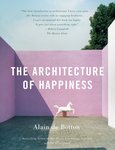Chestnut Hill was developed by incorporating design elements found in the Cotswolds of England. The consistent use of stone, wood and slate, intimate scale, and homes grouped around a common courtyard or near the sidewalk, creates a close-knit and walkable neighborhood. So, when architects and developers propose constructing a building that does not contain these characteristics, we get concerned that the surroundings we love will in some way become marred.
This item is available in full to subscribers.
We have recently launched a new and improved website. To continue reading, you will need to either log into your subscriber account, or purchase a new subscription.
If you are a digital subscriber with an active subscription, then you already have an account here. Just reset your password if you've not yet logged in to your account on this new site.
If you are a current print subscriber, you can set up a free website account by clicking here.
Otherwise, click here to view your options for subscribing.
Please log in to continue |


Cities, towns and communities are planned with a goal in mind. The city of Las Vegas, for example, is planned to attract those of us who like glitz. Charleston, South Carolina exemplifies Southern charm, and Santa Fe was built in homage to the pueblos.
For those of us living in Philadelphia and its communities, we find ourselves surrounded by traditional historic architecture including Colonial, Federal and Italianate styles. What makes all of these cities and communities successful is an attention to the specific elements that create the whole.
Chestnut Hill was developed by incorporating design elements found in the Cotswolds of England. The consistent use of stone, wood and slate, intimate scale, and homes grouped around a common courtyard or near the sidewalk, creates a close-knit and walkable neighborhood. Varied rooflines, dormers, and chimneys all work in harmony to create the “experience” we enjoy every day.
So, when architects and developers propose constructing a building that does not contain these characteristics, we get concerned that the surroundings we love will in some way become marred. So it was with great interest that our historic advisory and zoning committees anticipated a presentation by Cecil Baker, a modernist architect, who proposed a very modern building for Engine Company 37 on W. Highland Avenue to be built amidst very historic ones.
His presentation that evening was not a typical one. Yes, he spoke about the materials and how they would blend with the historic surroundings, how the cornice would contain historic profiles, and a traditional color palette would meld the buildings together. But it was what he said next that created the most stir. This new building would not only be a striking addition to our architectural collective but by its thoughtful and reflective design, it would “speak to us” as something new, yet respectful of what had come before.
Later, as I thought about Mr. Baker’s presentation, I remembered a book I had read several years ago entitled, “The Architecture of Happiness” by Alain de Botton. From my earliest interest in design, architecture and how we are affected by our surroundings, I tried to understand why certain individuals are attracted to certain styles, so much so that they are uncomfortable when surrounded by buildings, furnishings, even colors, that do not comply with their architectural lexicon. So when sleek, modern buildings are situated in close proximity to intricate, historic ones, our sense of “happiness” is threatened.
Although the book I am referring to is nearly 200 pages long, these few paragraphs concisely convey its message:
“In essence, what works of design and architecture talk to us about, is the kind of life that would most appropriately unfold within and around them. They tell us of certain moods that they seek to encourage and sustain in their inhabitants. They speak of visions of happiness.
“To describe a building as beautiful, therefore suggests, more than a mere aesthetic fondness; it implies an attraction to the particular way of life this structure is promoting, through its roof, door handles, window frames, staircase and furnishings. This feeling of beauty is a sign that we have come upon a material articulation of certain of our ideas of a good life.
“Buildings will strike us as offensive not because they violate a private and mysterious visual preference, but because they conflict with our understanding of the rightful sense of existence. Which helps to explain the seriousness and viciousness disputes about fitting architecture tend to unfold.”
For me, these words say a lot. Baker was so right. Buildings are speaking to us, and we choose to live with those that say nice things. But most of all, confirm that we have chosen the right community in which to live because it is those surroundings that confirm our contentment.
Patricia Cove is principal of Architectural Interiors and Design in Chestnut Hill and chairs the Historic District Advisory Committee of the Chestnut Hill Conservancy.